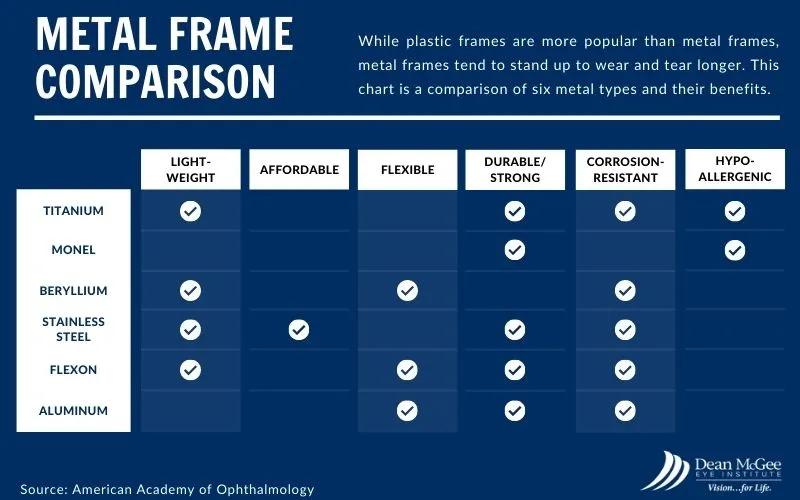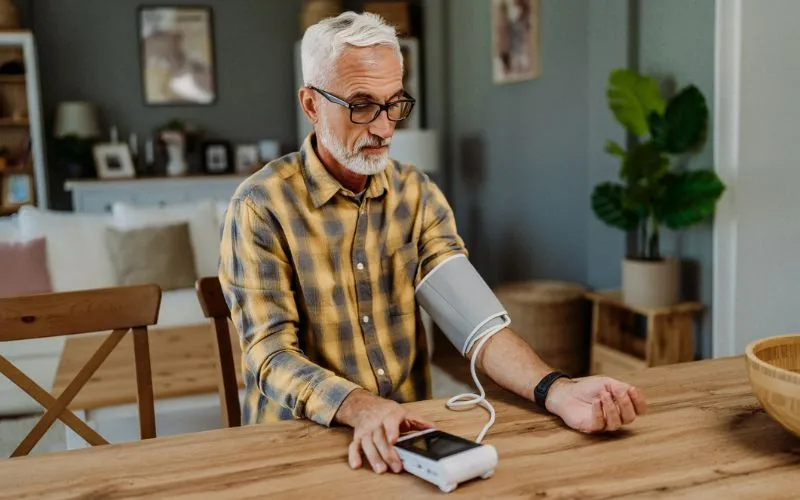When you are diagnosed with a refractive error (a vision problem in which the shape of your eye prevents light from focusing correctly on your retina), you have a choice to make regarding corrective lenses. Do you want to wear contacts or glasses?
Making this decision can be difficult for some, so we asked Rachel M. Caywood, OD, FAAO, an optometrist and clinical instructor at Dean McGee Eye Institute, to answer common questions our patients have about contacts and glasses. Hopefully, this information will help you understand your options.
Pros and Cons of Contacts vs. Glasses
There are an estimated 164 million U.S. adults who wear eyeglasses, according to the Vision Council. This number is more than three times the estimated 45 million Americans who wear contact lenses, according to the Centers for Disease Control and Prevention (CDC).
The main factors most people consider when deciding between contacts and glasses boil down to ease of use and cost.
Are Contacts More Expensive Than Glasses?
Costs of glasses and contacts can vary significantly depending on the type of lenses you wear.
“A year’s supply of daily disposables will cost about $700 if you wear them daily, whereas a monthly lens will cost about $300 for a year’s supply when factoring in the cost of solutions,” Dr. Caywood says. “Costs of glasses can range anywhere from less than $100 for a complete pair (single vision with a budget frame) to thousands for a designer frame with specialty lenses.”
As Dr. Caywood suggests, you must factor in supplemental costs associated with contacts. In general, the investment for glasses is an initial purchase with no additional long-term costs — although you may have to update your lenses more frequently if your prescription changes. Conversely, contacts require cleaning solution, lens cases, and eye drops in the event you suffer from dry eye.
Are Glasses or Contacts Better for My Lifestyle?
Lifestyle choices will also factor into your decision to buy glasses or contacts. People who play sports or are active may prefer contacts. Contacts can also correct your vision without altering your appearance, although some people prefer how glasses look. Optical shops, such as the DMEI Optical Shops, carry designer frames with the additional benefit of choosing from various lens options, including anti-reflective coatings, transitions tints, no-line bifocals, and ultraviolet (UV) protection.
Another factor to consider is ease of use. Glasses do not require nearly as much maintenance as contacts. You simply take them on and off at your leisure. Contacts, on the other hand, must be removed on a schedule, cleaned and stored properly, and replaced regularly. Some people prefer glasses for these reasons.
One other thing to note from Dr. Caywood: Remember you will need to learn how to put in and remove contacts if you have never worn them before. Do not let this sway your decision, though.
“I recommend watching some instruction videos online to see what is involved in the process,” she says. “After you master insertion and removal, contact lens wear is a breeze.”
Can Contacts Damage Your Eyes?
Anywhere from 40% to 90% of contact lens wearers do not properly follow the care instructions for their contact lenses, according to the CDC. Poor contact lens hygiene can lead to a higher risk of serious eye infections. In fact, the CDC reports these eye infections, some of which can lead to blindness, affect one out of every 500 contact lens users per year. Keratitis (inflammation of the cornea), in particular, leads to 1 million doctor and hospital visits annually. Visit our lens hygiene page for more tips on keeping your eyes healthy.
“Eye infection is the biggest risk of over wearing contact lenses or not caring for them properly,” Dr. Caywood says. “GPC (giant papillary conjunctivitis) is a severe allergic reaction to the contact lenses also associated with overwear. Daily disposable contact lenses greatly reduced the risk of an eye infection. For patients that wear two- or four-week disposable lenses, it is important to use fresh storing solution every night, replace cases monthly, and never use tap water to clean or rinse lenses.”
Alternating Between Glasses and Contacts
Even if you do choose contacts, Dr. Caywood recommends having a pair of glasses handy for times when you do not feel like wearing contacts or at night after you take your lenses out.
Contacts can inhibit the flow of oxygen to your eyes, so remove your contacts an hour or two before bed to allow your eyes to breathe.
“Some patients prefer contacts for specific activities like participating in sports or special occasions on the weekends and wear glasses during the week,” she says. “Others prefer to wear contact lenses to work or school and stick with glasses on the weekends or when they are less busy.”

Are Glasses Prescriptions the Same as Contacts?
Patients often ask if the prescription for glasses and contacts are the same. Dr. Caywood says they are not.
“A contact lens prescription is adjusted because the lens is on your eye,” she says. “Additional measurements need to be assessed, such as the curvature of your eye, so contacts need to conform to that curvature to provide a healthy fit. Those measurements are not necessary for a glasses prescription.”
What Type of Glasses Should I Get?
Between selecting lenses and frames, there are endless eyeglass options from which to choose.
Years ago, lenses used to be made of glass. Nowadays, plastic lenses are more common due to their lightweight and flexible composition. Polycarbonate lenses are impact resistant, making them an ideal choice for sports and activities. For people with stronger prescriptions, you can also choose a thinner, high-index lens to reduce the overall bulkiness of the glasses.
After consulting with your eye doctor and choosing your lenses, you have the option of adding an anti-reflective coating or a UV coating. Anti-reflective coatings reduce glare and help you avoid squinting or straining when looking at objects, especially smaller text or images off in the distance. UV coatings protect your eyes from the sun’s UV rays. Plastic lenses block most UV light from entering your eyes.
Frames, by far, offer the most diversity. They can either be plastic, metal, or a combination of the two. Common types of metal include titanium, stainless steel, aluminum, beryllium, and monel. Plastic frames are made from several types, including zyl, cellulose acetate propionate, blended nylon, and optly. Plastic frames are more durable and cost effective, making them ideal for small children who may drop, bend, or break them.

What Type of Contacts Are Best for Me?
Soft contact lenses and gas permeable contact lenses are the two most common types of contacts from which to choose. Hybrid lenses (rigid gas permeable lens material for the center of the contact surrounded by a soft material), multifocal soft lenses, and rigid gas permeable lenses are also available.
Disposable soft contacts have a replacement schedule anywhere from one day to three months. Hard contacts are more durable and can last for years with proper care.
In many cases, Dr. Caywood recommends soft lenses to her patients due to the comfort they provide. Soft lenses can treat various types of eye conditions. For example, daily disposable lenses are better suited for patients with dry eye, while other soft lenses can help patients with astigmatism and stronger prescriptions.
“I have many patients who have eye diseases and conditions where soft lenses are not the best option to optimize vision,” she says. “That is when I recommend gas permeable or scleral lenses which are custom made and provide better vision for patients who have stronger prescriptions, and problems like irregular astigmatism or keratoconus.”
MiSight Contact Lenses
Myopia, also called nearsightedness, is a common refractive error in children that can get worse as they age before stabilizing between the ages of 20 and 40.
In 2019, the Food and Drug Administration (FDA) approved the use of MiSight lenses, a daily disposable contact lens for children to reduce the progression of myopia. MiSight lenses help redirect how light hits the retina, and Dr. Caywood says the MiSight lenses reduce myopic progression by about half.
“We are excited to offer this treatment option at Dean McGee Eye Institute, because children are now becoming more nearsighted due to increased screen time and near work and less time outdoors,” she says. “It is important to minimize myopia if possible to reduce the risk of problems associated with myopia such as retinal detachment, glaucoma, myopic macular degeneration, and early cataract progression.”



